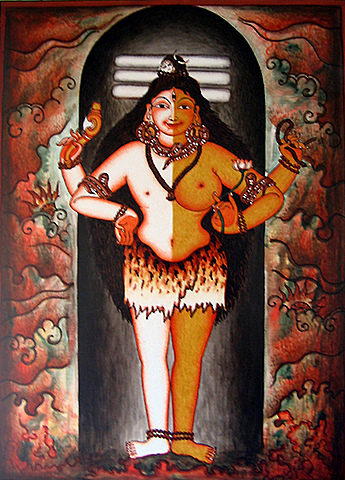Panayannarkavu is one of the few temples in the state of Kerala where the Sapta Matas, or the Seven Mother Goddesses are worshipped as the presiding power. Chamundi, the fiercest of them all, gets the predominant place as Kali. There is also a temple of Siva in the premises. Situated in a luxuriant grove near Parumala and girdled by a tributary of the Pampa, this apparently modest temple is only […]
am
Krishnapurams history is pregnant with faded memories of a bygone era. This unpretentious village near Kayamkulam was once the abode of the heirs apparent of the Kayamkulam royal house. Near the old temple of Krishna from which the area got its name, is an old but well-kept palace. Though much smaller in size than Padmanabhapuram palace, this is a much more typical example of Keralas architectural style. This palace was […]
Even a casual tourist to the Padmanabhapuram Palace will be affected by a hard sense of the past. History, to use a cliche, slumbers here, brooding over the past. This palace-complex was once the nerve centre of the Venad kingdom, later the kingdom of the rulers of Thiruvithamkur, whose family tree claims lineage to the Cheras of Kodungalloor. This magnificent palace is also a splendid example of native architecture at […]
From Indian Painting: The Great Mural Tradition, by Mira Seth The Cheras ruled in Kerala in the third century BCE. They seemed to have been the most prominent kingdom here until the sixth century CE. The Chalukyas of Badami are reported to have conquered north Kerala during the sixth and seventh centuries. The Pallavas attacked and defeated them from the west in the sixth and seventh centuries, the Pandyas in […]
The colors selected by the artists had a direct bearing on the characters portrayed. According to ancient texts, there are three broad qualities assigned to superhuman, human, and sub-human beings, viz. Satva (the noblest), Rajas (the active and middle principle) and Tamas (the dark and destructive principle) respectively. To represent Satvic quality, green and shades of green were used. Characters of the Rajasic quality were portrayed in red or golden, […]
Generally, frescoes were painted on the surface of walls of granite or laterite after they have been prepared suitably. The wall, technically referred to as the carrier, was first given a rough plaster coating, with a mixture of sand and lime. A second, smoother coating of plaster was then applied on the first. These two layers [are] technically referred to as the ground. A mixture of resin and lime solution […]
This is among the more esoteric forms of Siva, the destroyer in the Hindu trinity. Beyond stereotypes, beyond boundaries and frameworks, Siva stands at the periphery of social order. Siva is the eternal ascetic, famed for his excesses, whether in penance and austerities or in sexual vigor. Siva, the intrinsic unpredictability immanent in everything that’s created. Siva, the undifferentiated spirit, the potential from which everything manifests, Purusa, the primordial. Parvati, […]
One could say that the tradition of painting on walls began in Kerala with the pre-historic rock paintings found in the Anjanad Valley of Idukki district. Archaeologists presume that these paintings belong to different periods from the upper Paleolithic period to the Early historic period. Rock engravings dating to the Mesolithic period have also been discovered in two regions of Kerala, at Edakkal in Wayanad and at Perimkadavila in Thiruvananthapuram […]
